How the U.S. Dollar Began
THE SPANISH MILLED DOLL AR (8 REALES COIN) WAS THE BASIS FOR THE U.S. SILVER DOLLAR
BY GREG REYNOLDS
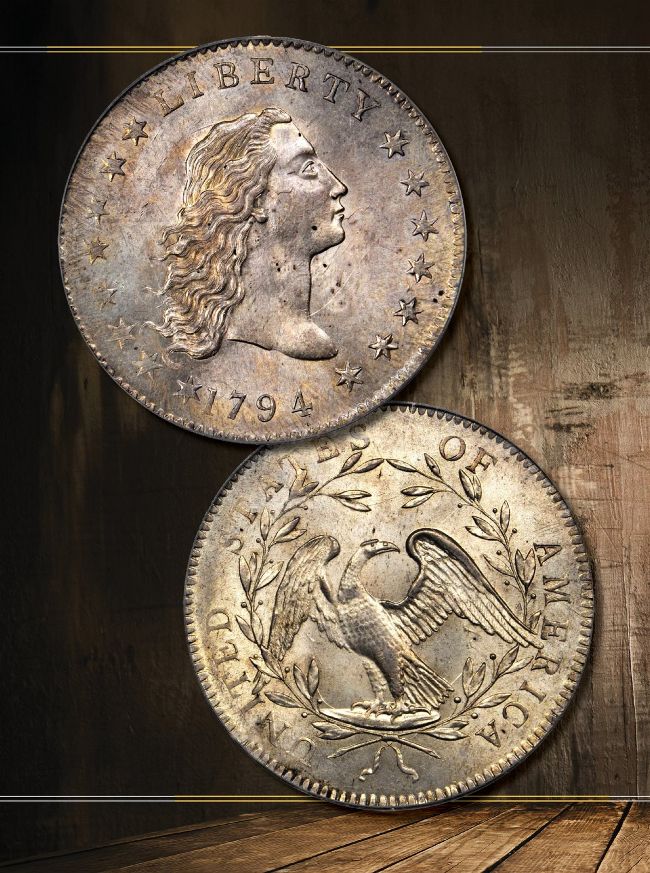
PHOTOGRAPHY BY STACK’S BOWERS GALLERIES
ADOBE STOCK / BY EGOR
Official U.S. silver coins were first minted in 1794, and the new coinage system of the United States revolved around the silver dollar, as this was the base unit. The U.S. silver dollar, in turn, was based upon the Spanish milled dollar (8 reales coin).
Before the 20th century, the main unit of money in a society was generally defined by a physical amount of gold or silver. Throughout history, however, an amount of gold or silver that was determined by a government to define a unit of money was subject to change for political or economic reasons.
To understand the U.S. dollar in the present, it may be necessary to have some understanding of how it came about. To think about the history of the dollar and U.S. coinage in the past, it helps to refer to grains.
For centuries, grains were used as a measure of weight for many things, including gold and silver. 480 grains equals one troy ounce and 5.500 grains equals one troy pound. 7.000 grains equals one standard or regular pound. Original amounts in grains tend to be clearer and more straightforward then their equivalents in troy ounces, which are usually awkward approximations.
Amounts in grains can easily be understood in troy ounces if it is remembered that 480 grains equals one troy ounce, but a conversion from an historically noteworthy number of grains to troy ounce may include many digits to the right of a decimal point. For example, before the Coinage Act of 1853, a dime was mandated to have 37.125 grains of silver, a number that seems sensible and can be remembered. The conversion, however, works out to 0.07734375 troy ounce, a number that is awkward and difficult to remember. Ten times this number, 0.7734375 troy ounce, is the amount of silver in a U.S. silver dollar, which is better remembered as 371.25 grains.
In the past and present, troy weights usually refer to gold or silver and their connection to money. Before the 20th century, the U.S. dollar was legally defined as a weight in silver and gold, but changing market conditions often made it difficult for the legal definitions to be practical or even valid in reality.
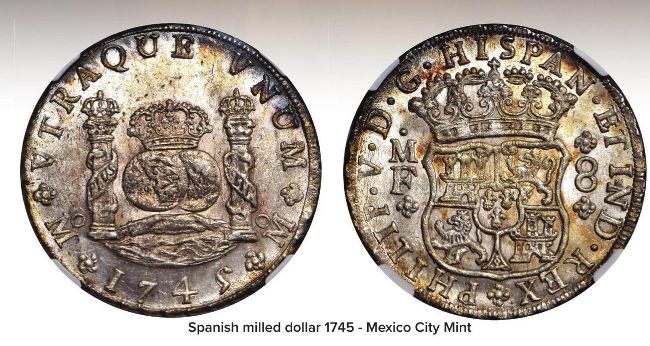
Spanish milled dollar 1745 -Mexico City Mint
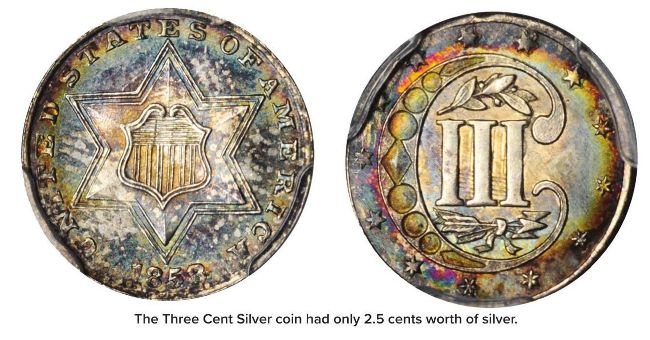
The Three Cent Silver coin had only 2.5 cents worth of silver.
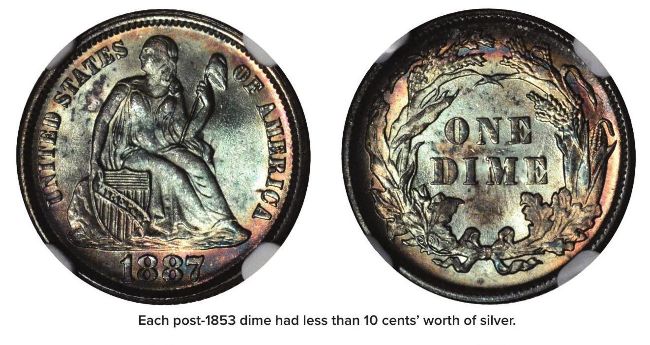
Each post-1853 dime had less than 10 cents’ worth of silver.
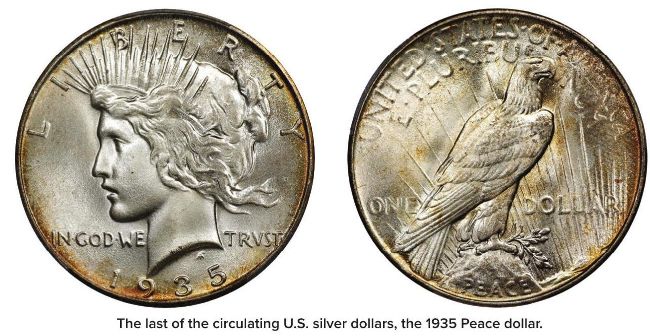
The last of the circulating U.S. silver dollars, the 1935 Peace dollar.
After 1851, the relationship between the face values of U.S. silver coins and their silver content became complicated. Before 1851, the value of the silver in every U.S. silver coin was equal to its face value in dollars or cents: A quarter had a quarter’s worth of silver. A dime had a dime’s worth of silver.
Many were shocked in 1851 when a Three Cent Silver coin was introduced that had only 2.5 cents worth of silver. Merchants, though, accepted them at face value.
Before 1851, it was certain that a U.S. dollar referred to 371.25 grains of silver (about 0.7734 troy ounce) and a half-dollar coin had half as much silver. All U.S. silver coins were alloyed with copper. I am here referring to the net amount of silver, not the total weight of the coins.
By 1853, all newly made U.S. silver coins, except silver dollars, did not have enough silver in them to meet the official government valuation in silver of their respective face values. For example, before 1853, a dime had 37.125 grains of silver: one-tenth of the amount of silver in a U.S. silver dollar. Afterward, each dime had 34.56 grains of silver, a reduction of about 7%.